4 days into Peru and 2 readings behind
(this is a song reference don't worry Jon + Daniel)
Status update: I am having the time of my life.
While this trip is certainly not a holiday, it almost feels illegal to have this much fun in a supposedly rigorous academic setting. Trudeau, if you’re reading this, rest assured I am an academic weapon who is utilizing this grant accordingly.
Among the, sure to be many, accolades of this trip is the line trend that started in the Toronto airport. Although, I guess credit should actually go to Jon for his chronic deadpan. It has really caught on and is sure to continue to the bitter end. Shoutout to all of my Toronto peeps who dragged my failing body out of the airport after I lost my fight to sleep deprivation, turbulence and terrible airplane food. You are real ones <3
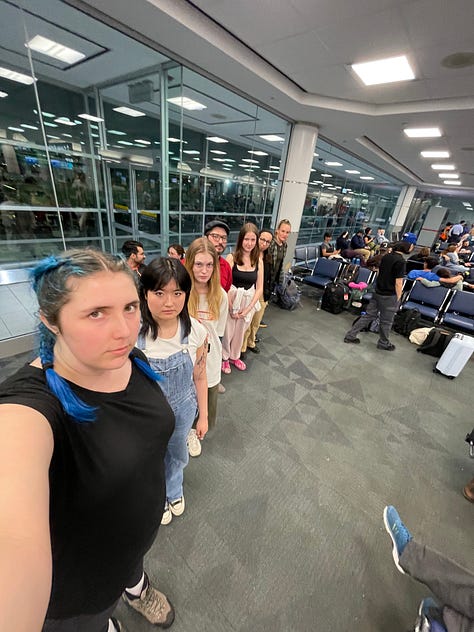
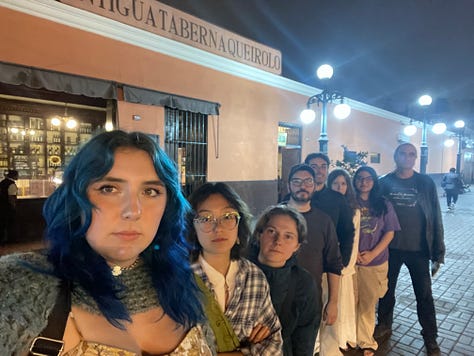
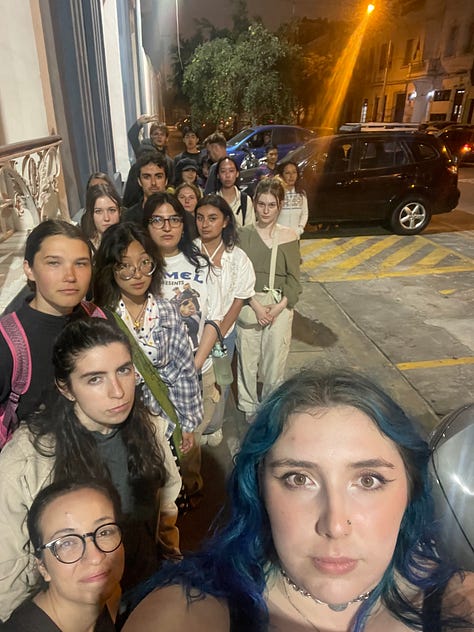
I came into this trip with very few expectations. This is partly because our itinerary was half composed of bar recommendations and partly because my goal was simply to learn and exist. Learning and existing are things you would think I am doing constantly but I find myself far too rarely engaging in. One of my favourite experiences thus far, and a prime example of this phenomenon, was attending the Museo Larco.
The Museo Larco (for those reading without the intention of discovering if this is one of the 2 required blog posts they want to comment on this week and therefore no context) is a museum that houses a vast collection of “pre-Columbian art and culture” that features ceramics, textiles and jewellery from Indigenous people throughout Peru. As a group, we went on a tour through the museum and were introduced to different beliefs, symbols and concepts represented in the art around us. I have a lot to say about this experience but that’s actually not the point of this post.
The next space we visited in this museum was the Erotic Gallery. This was a collection that drew out a few giggles and gasps, as well as awkward eye contact between me and an older gentleman while we were both inspecting an anthropomorphic penis. However, that’s still not the point of my post.
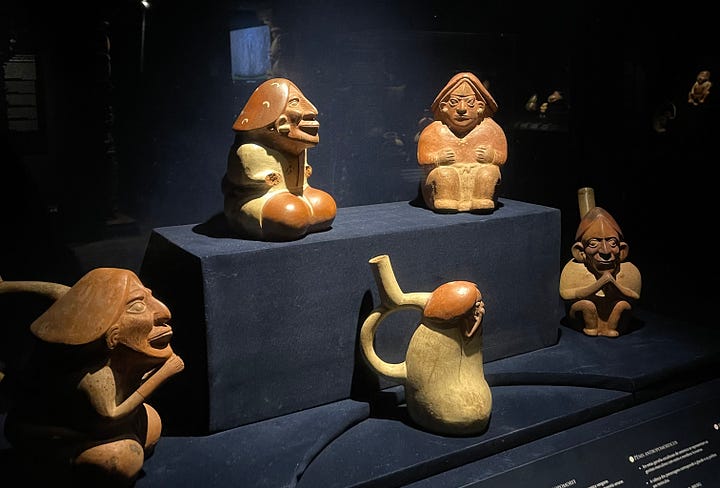
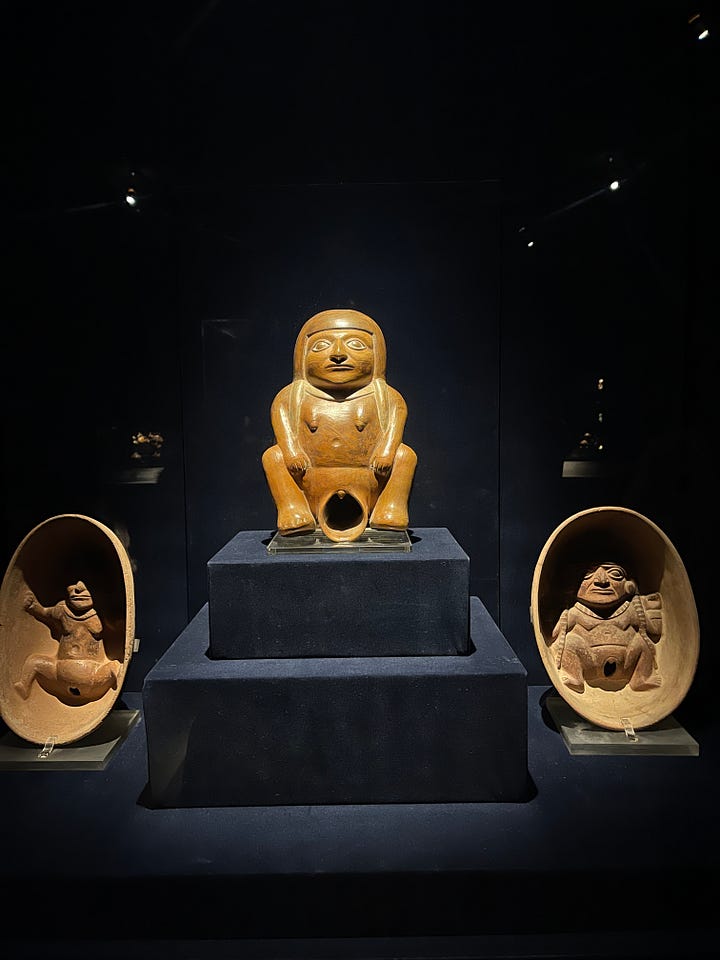
My point comes after all of this, in the very last room in the basement of the museum, as I was preparing to walk out to revisit rooms that I wanted pictures of earlier in the tour but felt rude to stop in. As I’m brushing past this last room my classmate Emily is standing perfectly still and staring at the wall. Without turning her gaze away she calls over her shoulder to me “isn’t this so incredibly beautiful? I think this is my favourite piece.” The art she is looking at is a massive photo of a farm-esque area in Peru with the stars glowing in the sky. I slow down and go stand beside her as she explains that the photographer actually used 14 different frames and mapped the piece together. The stars show constellations and are so clear because of the lack of light pollution. She says there’s something so still and calming about it. And in this moment I remember that I am actually supposed to be attempting to see through other people’s eyes.
Okay maybe not literally through another person’s eyes but I am present in a museum on Indigenous art and culture that is attempting to allow me a window in through using representations and I am so focused on what I find interesting and interpretable that I am missing what is right in front of me. This piece was also a great reminder that the land itself, the environment and everything that comes with it, is so key to all of these conversations we are having. The woven blankets were well preserved in the museum because of the dry environment and the special alcohol barrels were cone-shaped because if you screwed them into the ground it kept the fermented drink cold. There is a divide in what I am trained to see and deem important and what I was completely missing.
I come from a context where my environment is always a secondary factor and the tangible, moldable, material objects are the important information to pay attention to. My question for this post is if other people have ways in which they look for the unknown? I guess all education is being trained to see and know what you do not know but I find it increasingly intangible to grasp.
I almost cried thinking about pigeons today,
Orla


hey hey hey my dear! In regards to your question, I also struggle with a similar anxiety of not knowing what I am missing because of my frame of reference. This is one of the reasons I'm so glad to be here with all of you insightful lads because by constantly engaging in conversation with you I am able to reframe certain things that I've seen and noticed. I also find it helpful here in Latin America to try to absorb information in both English and Spanish because information is typically presented differently in both languages, so by trying to close the gap I can read between the lines (also just languages elicit dif emotions and sometimes there aren't direct translations - so grool). I also try to just look sometimes. It can be hard but the exercise of just observing and not continuing the thought can be beneficial in absorbing my surroundings. I feel there's always pressure to look and draw conclusions but sometimes just noting, then marinating those notes, can accidentantly let you stumble into the unknown. Loved the way your brain works queen!
Hi Orla,
I also really enjoyed the museum! It was unique, especially coming from a context in the western world where the showcasing of art like that, even with cultural significance, could be read as vulgar. I think it was the exact opposite, it was life giving. The art in which Emily pointed out at the end was also an interesting addition to the space. I think it really help ground people in place, which is important when were attempting to work with Indigenous frameworks.